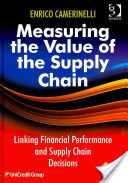Inventory: the power and powerlessness of the CFO

These are uncertain times, with inflation and the war in Ukraine holding back economic growth. For many CFOs, the question is no longer whether there will be a recession, but when it will hit and how long it will last… and how it will affect inventory.
For the past two years companies have been struggling with shortages of stock, components and raw materials, which in turn have led to shortages of finished products. The shortages have caused panic buying, with people rushing to buy more before the costs go up again. The situation has been compounded by inflation and rising prices.
However, with economic growth now slowing, there is a risk that the stock shortages are about to turn into excesses. Now that stock levels of raw materials and components are more or less back to normal, demand for finished products is in danger of stagnating. Is this a cruel irony, or an illustration of the bullwhip effect?
Either way, it is making numerous CFOs very nervous. Many of them have made commitments to banks and shareholders. Banks specify the conditions that must be met in loan covenants based on the repayment capacity and the associated free cash flow. Shareholders expect a certain dividend which also has to come from the free cash flow. If profits drop, such as due to falling demand and rising raw materials prices, the company will have less free cash flow. If this is then combined with higher inventory levels, which also eat into the cash flow, it can cause a major headache. That’s why Finance wants less stock, not more!
Powerful yet powerless
This brings us onto the contradiction of the CFO’s power and powerlessness. A CFO’s power comes from their position within the executive team, often as the CEO’s right-hand man. What Finance wants, Finance gets. If Finance wants stock to be reduced, then stock will be reduced. And this is understandable in the current economic context.
However, the CFO is powerless in terms of the operational impact. In Finance, they don’t always understand why the stock levels are suddenly rising. ‘Can’t we just order a little less?’, they think. Well, inventory is slightly more complex than that – because of lead times, for one thing. Deliveries received today have sometimes been ordered three or four months ago – back when there were shortages, not a recession. So there is a certain delay in the system; you can turn the steering wheel now, but you won’t see the impact until several months later. It’s far from easy – definitely a case of ‘advanced driving’.
Many companies have thousands – or even tens of thousands – of raw materials and components. Their operational management is done through the ERP system. That management is often simplistic and static. If one key raw material or component doesn’t arrive, the hundreds or thousands of others just sit there. If an order gets delayed, there is little insight into what you can expect and when.
Panic and improvisation
The lack of visibility about shortages often leads to panic and improvisation, and it is tempting to switch to working manually in Excel. This creates an illusion of control, but it does not give you real control; supply chains are simply too complex for that.
I see frustration, powerlessness and even panic in the eyes of CFOs. Every month, they have little choice but to anxiously wait and see whether inventory has gone up or down. The euphoria of a strong quarter-end is often mercilessly punished by rising stock levels the following month. The mood swings between hope and despair.
The supply chain director’s position is the exact opposite of the CFO. The supply chain discipline has come a long way, but it doesn’t have the same board-level impact as Finance, Sales or Operations. Supply Chain is the ‘new kid on the block’. The general expectation seems to be just keep quiet and keep the deliveries running smoothly.
While Supply Chain doesn’t have the same power as Finance, it does have operational impact. Who runs the world? That’s right: Supply Chain! The pandemic has made that indisputably clear. And who has the best view of inventory and the associated trends? Supply Chain does, despite the inadequate tools and lack of information.
Doomed marriage
Finance and Supply Chain might seem like a match made in heaven, but often it’s more like a doomed marriage. The typical CFO lacks supply chain knowledge, and the typical supply chain director lacks finance knowledge; two partners who don’t speak the other’s language. If companies really want to get a grip on inventory in the current economic context, then it will be necessary to bring the two together. Shall I call Cupid?
Bram Desmet, CEO of Solventure and Adjunct Professor of Operations & Supply Chain at Vlerick Business School








